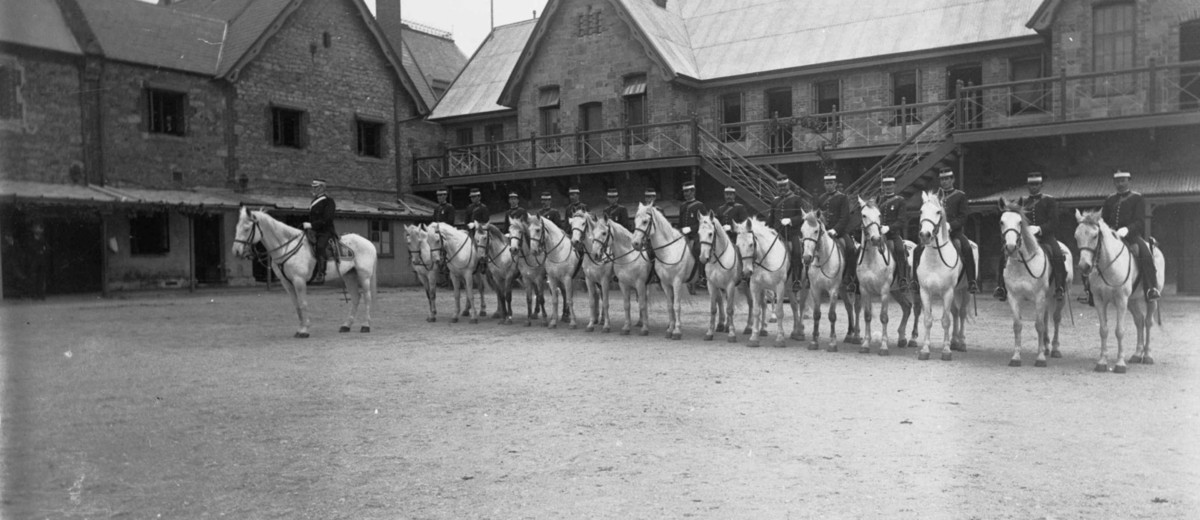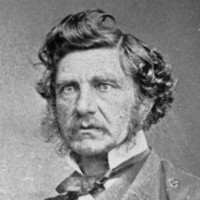South Australia has a police force by accident. Ironically, this convict-free haven where crime was not meant to exist established Australia’s first centrally organised police force. The date was 28 April 1838.
Fear and a determination to keep out escaped convicts meant that the police role in South Australia was not so much to suppress lawlessness as to exclude it. From the outset police were armed, mounted and capable of rapid deployment.
The history of police in South Australia was turbulent as they strove to impose Pax Britannica across a vast, wild and hostile frontier stretching from Mount Gambier in the South East to Darwin in the north. The first officer-in-charge, Henry Inman, was sacked for dishonesty and three police commissioners (Alexander Tolmer, Peter Egerton Warburton and Harold Salisbury) have been dismissed. There have also been several royal commissions and inquiries into the South Australian Police Force (SAPOL), besides numerous internal reorganisations.
Police attention was first directed to enforcing British law on Aborigines, and response to native crime was swift and terrible. In 1840 at a site near the Maria massacre, police authorised to exact summary justice hanged two alleged perpetrators without trial. The following year they rode into New South Wales with overlanders and fought a bloody battle near Lake Victoria, resulting in significant loss of life to the Aboriginal combatants.
These actions demonstrate the ruthless intent of many colonists to establish, survive and prosper using an organised and motivated police – outside both legal and territorial jurisdictional boundaries if necessary. Now tempered, this legacy forms an important part of the South Australian psyche, apparent during times of civil unrest, including strikes in Broken Hill in 1917 and at Port Adelaide in 1928, the activities of Special Branch from 1939 to 1978 and numerous protest demonstrations during the Vietnam War.
Under common law, the office of constable is a powerful and independent institution, yet SAPOL is simply another government department dependent on adequate funding and political whimsy. On occasion the pragmatic reality of the relationship between the police and their political masters has caused conflict. Such was the case with the Special Branch, formed in 1939, which saw the scope of its work dramatically widened following the creation of the Australian Security Intelligence Organisation in a climate of Cold War paranoia in 1949. In the following decades its function became clouded. Clarification came with the controversial sacking of Harold Salisbury in 1978, which left a bitter legacy and a highly sensitive portfolio. In the wake of Salisbury’s sacking, the Police Regulation Act was amended to provide statutory grounds on which a police commissioner might be removed from office and for the first time police were placed under government direction.
South Australia’s police have long been innovative, as with their novel use of camels to patrol outback regions from 1880. They also boast the first police union in Australia (1911) and were the first to introduce women police into their ranks (1915). Other innovations include the exclusive use of grey horses for the mounted police from 1954, live-in police cadetships at Fort Largs Police Academy from 1961 and a full-time police band.
Notwithstanding some isolated instances, the most notorious of which was perhaps that involving a former head of the Drug Squad convicted of selling illegal drugs and sentenced to a lengthy prison term, South Australian police can thank their origins for a culture that has remained remarkably free of corruption and has thus been spared the ignominy of sensationalist investigations. A reputation for openness and a ready acceptance to work with an independent Police Complaints Authority and in partnership with the public over a range of ‘community policing’ initiatives has seen SAPOL enjoy a high level of credibility and confidence.
Until the advent of electronic road traffic detection devices, SAPOL was a serious drain on government revenue. The real challenge before it now is to maintain relevance in the face of constant change and unrealistic demands on meagre resources.

Hi David,
According to a Brighton Heritage Review conducted by McDougall & Vines in 1998 that building was constructed in 1937. You might be able to find more information in a Trove search of newspapers from that time - https://trove.nla.gov.au/
You might also find this guide on researching house or property records useful:
https://archives.sa.gov.au/finding-information/discover-our-collection/h...
Hi
I belong to the Seacliff Uniting Church which now owns the old (Heritage) Brighton Police Station on Wheatland St, we are wondering when it was built please?
Regards
David Greig
Cawley, J, Blue on grey: A story of the Mounted Cadre of the South Australian Police Force (Strathalbyn: J Cawley, 1991)
Clyne, RE, Colonial blue: A history of the South Australian Police Force, 1836–1916 (Adelaide: Wakefield Press, 1987)
Cockburn, S, The Salisbury affair (Melbourne: Sun Books, 1979)




Add your comment